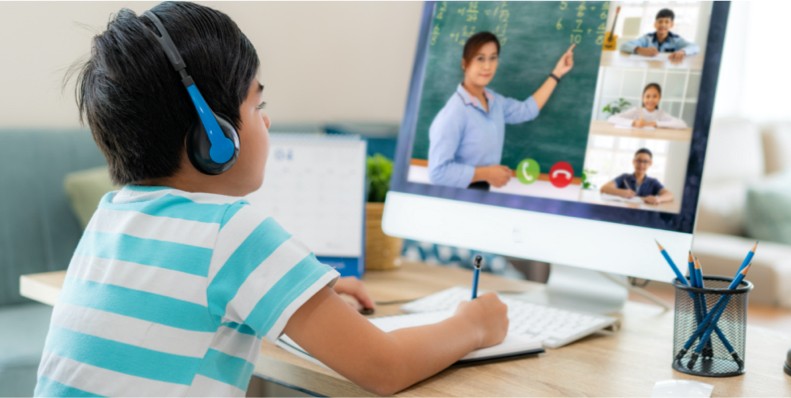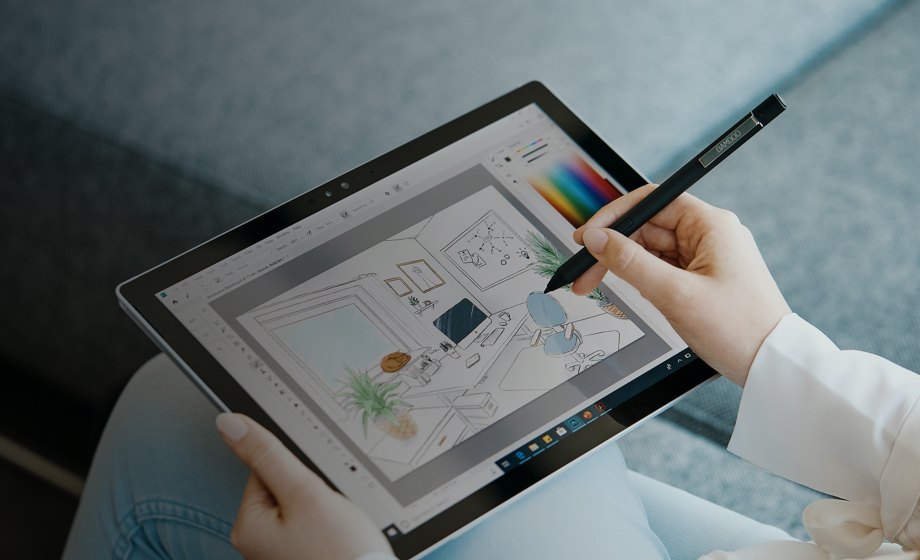Pen tablets
Esboza, dibuja y edita imágenes usando una tableta con gran capacidad de respuesta y un lápiz preciso, y observa cómo tus creaciones aparecen en pantalla.


Se trata de un reto anterior a la pandemia, pero ha cobrado mayor importancia a medida que algunos niños vuelven al colegio y otros siguen aprendiendo en casa: ¿cómo pueden los profesores mantener la igualdad en el aula y garantizar que todos los alumnos crezcan y se desarrollen al mismo ritmo?
La situación global ha puesto claramente de manifiesto las disparidades en cuanto al acceso y el origen, ya que algunos niños pueden sentarse en espacios de trabajo creados especialmente para ellos, con su propio equipo, mientras que otros carecen de herramientas que les ayuden a aprender y progresar. Algunos simplemente no han podido trabajar y aprender, mientras que otros han pasado el tiempo haciendo poco más. Ahora, con algunos niños aprendiendo a distancia y otros presentes en clase, ¿cómo pueden los profesores velar por una sincronización de todos los alumnos cuando no están todos en la misma aula al mismo tiempo?

Aunque algunos estudiantes hayan tenido la oportunidad de progresar aprendiendo desde casa, muchos han sufrido enormes dificultades con el cambio de rutina y la falta de acceso a las tabletas y las computadoras. Esto habla de problemas de igualdad más amplios, especialmente relacionados a factores socioeconómicos, ya que algunos niños pueden utilizar los equipos de sus padres, mientras que otros tal vez carezcan de esa tecnología en su casa. Por lo tanto, es vital que los profesores interactúen con los padres y entiendan las necesidades de cada niño de la clase para ver si son capaces de satisfacerlas en casa con herramientas de aprendizaje a distancia.
¿Por qué los niños se quedan en casa? ¿Por razones de salud? ¿o se puede disipar la preocupación por volver a la escuela y crear oportunidades de aprendizaje en persona? ¿Los niños más pequeños pueden estudiar en compañía de un adulto en casa o participar en las clases de forma virtual? ¿Disponen del espacio y del equipo para hacerlo? Plantear estas cuestiones puede ser sumamente complejo. Pero si no se responde a ellas, aumenta el riesgo de que la falta de igualdad se consolide.

Esta cuestión es crucial ahora que algunos estudiantes no pueden asistir a la escuela. Las escuelas y los programas gubernamentales han tratado de reducir la brecha de acceso proporcionando equipos y herramientas de enseñanza remota, por lo que resulta esencial garantizar que quienes no pueden estar físicamente en el aula puedan participar. Comprueba con los padres qué tipo de conexión a internet está disponible, en caso de haberla.
Si no hay computadoras en casa, es vital asegurarse de que los niños tengan una con las herramientas de aprendizaje virtual necesarias instaladas. Infórmate sobre los diversos programas de apoyo para ver si el gobierno local o nacional puede suministrar estas herramientas de aprendizaje a distancia, o si el departamento de informática de la escuela puede prestar computadoras. Procura evitar pedir a los alumnos que impriman las hojas de trabajo; puede que muchos no dispongan de una impresora para hacerlo y la devolución de este papel para su calificación también puede resultar difícil, ya que los gastos de envío son caros y los escáneres no siempre son una opción viable. Wacom puede ayudar a que los profesores puedan añadir fácilmente notas manuscritas a los trabajos y ensayos digitales, mientras que los estudiantes pueden utilizar la misma tecnología para dibujar y crear de una forma más natural sin dejar de utilizar la computadora.
Conseguir que los alumnos expongan cómo se sienten en el nuevo entorno de aprendizaje puede ser una forma excelente de que los profesores y los compañeros comprendan los retos a los que todos se han enfrentado durante esta época sin precedentes. Esto puede adoptar la forma de ejercicios escritos o de un debate abierto la primera vez que todos estén juntos, física y virtualmente, en clase. Este diálogo abierto ayudará a mantener la igualdad y contribuirá en gran medida a que todos los alumnos se sientan valorados, tanto si estudian en casa como si vuelven a la escuela por primera vez en meses. Estas discusiones deben continuar periódicamente para garantizar que todos estén en igualdad de condiciones.

Puede ser difícil, pero plantear el hecho de que algunos alumnos están en el aula y otros no es esencial para garantizar que se mantenga la igualdad. Esto implica hablar con los alumnos y explicarles por qué las cosas son diferentes y cómo será el aprendizaje en este nuevo entorno. Establecer un nuevo conjunto de reglas y convocar a todos los alumnos a participar en las clases, incluidos los que estudian a distancia, es una buena forma de normalizar la situación. A la hora de estudiar en grupo, procura que al menos un miembro de cada grupo esté en casa, lo que permitirá a los alumnos presenciales desarrollar sus habilidades tecnológicas y comprender los retos por los que pasan los que no están físicamente presentes. Las tabletas y pantallas de Wacom hacen que sea fácil y natural para el alumnado trabajar y colaborar en los mismos programas académicos y hojas de trabajo de forma virtual con alumnos remotos, con la misma eficacia que si estuvieran sentados uno al lado del otro.
Wacom Intuos facilita el aprendizaje y la colaboración. El lápiz transmite una sensación increíblemente natural en tu mano, con más de 4000 niveles de presión y un diseño ergonómico para una experiencia de escritura natural. Wacom Intuos es realmente fácil de usar. Basta con conectarte a tu computadora o dispositivo Android. Además, con el Bluetooth puedes establecer la conexión con tu computadora pulsando solo un botón. Así que estás preparado inmediatamente.
Producto recomendado

Wacom Intuos BT
Esboza, dibuja y edita imágenes usando una tableta con gran capacidad de respuesta y un lápiz preciso, y observa cómo tus creaciones aparecen en pantalla.

Esboza, dibuja y edita imágenes usando una tableta con gran capacidad de respuesta y un lápiz preciso, y observa cómo tus creaciones aparecen en pantalla.

Dibuja, diseña y crea directamente en una pantalla de alta resolución con un lápiz preciso.


Escribe y anota rápidamente ideas en tu dispositivo móvil con un lápiz digital Wacom.
La estrategia de Wacom consiste en acercar la tecnología a las personas mediante su tecnología de interfaz que hace que la experiencia al usarlo se sienta natural. Esto ha convertido a Wacom en el fabricante líder a escala internacional de pen tablets y pantallas interactivas, así como de lápices digitales y soluciones para guardar y procesar firmas digitales. La tecnología avanzada de los dispositivos Wacom es Intuitiva y se ha utilizado en la creación de algunas de las películas, efectos especiales, moda, diseños y obras de arte digitales más interesantes del mundo, y ofrece a los usuarios domésticos y profesionales una tecnología de interfaz líder para expresar su propia personalidad. Fundada en 1983, Wacom es una compañía global con sede en Japón (bolsa de valores de Tokio: 6727), con filiales y sucursales en todo el mundo para cubrir operaciones de marketing y distribución en más de 150 países.